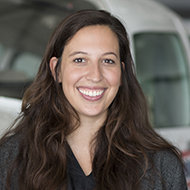Wiiings not required
Helicopter aerobatics with Red Bull pilot Aaron Fitzgerald
Once upon a time in Wenatchee, Washington, a boy saw a helicopter and it changed the course of his life.

“I was probably about eight or nine years old. And they were building a transmission line, a power line, behind my house,” says Aaron Fitzgerald.
“And I hiked up there by myself,” he says, hoping to get a closer look at the helicopter that was helping build the line on a nearby mountain. “And I was just fascinated sitting there as a little kid. And then I realized he was setting up to land. And I knew that he wouldn’t land if he saw me there. So, I went and hid in a bush. No joke.
“And the pilot landed that S-58T about 30 feet away from me. Didn’t see me, thank goodness. And then he pulled the throttles back to idle, and sat there, and pulled out his sandwich, and started eating his lunch with the rotors turning. And I was sitting in that bush looking at that guy going, ‘That is the coolest human being I’ve ever seen in my life.’”
Fast-forward
Fitzgerald’s a long way from Wenatchee now, and since that fateful day has become a helicopter airline transport pilot, flying everything from news, TV, and movies, to power lines and fire suppression before becoming Red Bull’s U.S.-based helicopter pilot in 2016. We visit him at Red Bull’s immaculate hangar at the Whiteman Airport (WHP) in Los Angeles. Inside are two mid-eighties Messerschmitt-Bölkow-Blohm BO 105s with the classic Red Bulls and sun logo, a Red Bull fridge and hangout corner, spare parts neatly organized in a loft, and boxes of red pyrotechnics.
His first year with Red Bull “was pretty much just heavy maintenance,” and 2017 was about training and getting everyone up to speed. Fitzgerald’s first airshow season was in 2018, with his first show at Luke Air Force Base.
“Oh, no pressure. Yeah. The announced attendance that day was 300,000 people.”
The BO 105s are unmodified but for the movement of the battery to the front of the helicopter for a slight weight and balance change, a choice he notes is also common in the 105s used for air ambulance and other medevac ops. Otherwise, it’s a stock vintage helicopter with a slick paint job. The hardest part about keeping them flying is finding parts, he says, and in pieces, the aircraft would be more valuable. As long as the maintenance team can keep them flying, he expects Red Bull’s helicopter program will continue.

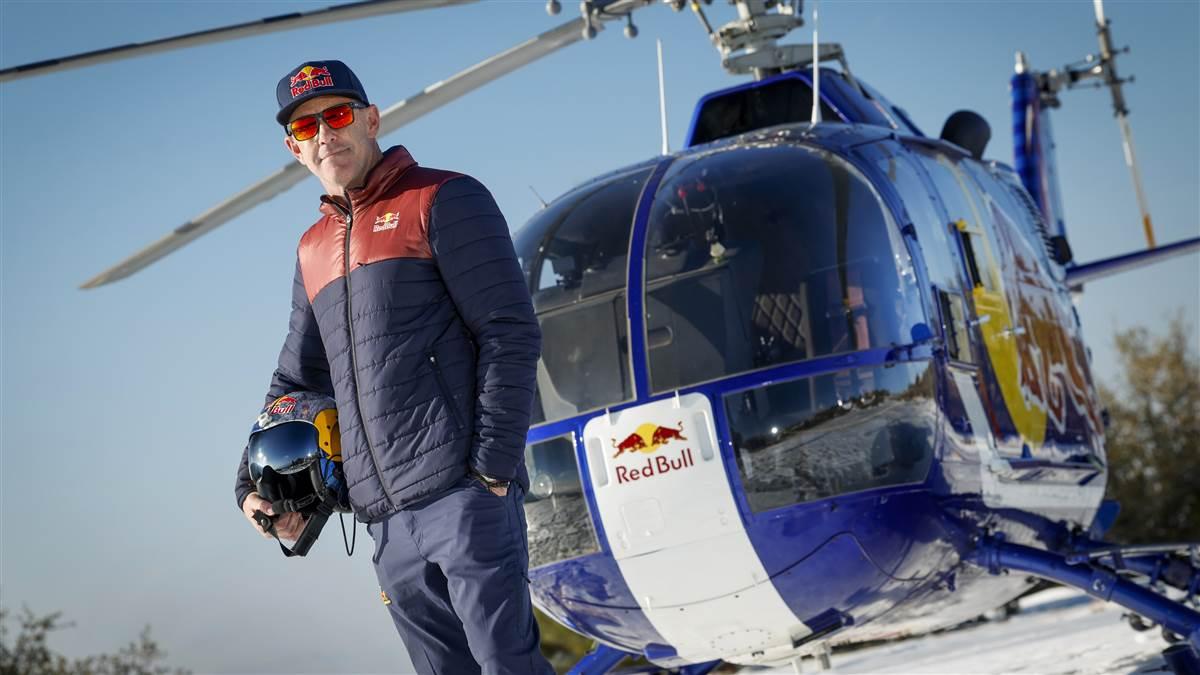
Time to fly
Flying upside down in a helicopter is not an everyday experience for most of us, but today, I get to ride along. Fitzgerald tows the BO 105 to the flight line and pops a piece of Dentyne Ice.
“I don’t think of myself as a superstitious guy, but I have never flown anything without chewing gum.”
Whiteman is a busy field, and on a beautiful day like today, even busier. Almost too tall for the helicopter—and he in fact has a thinner-than-normal seat cushion to allow just a shred more space but still has to slouch a little—Fitzgerald climbs in and briefs, before we take off and head over the Angeles National Forest to the northwest. As he puts on his gloves and helmet, he transitions from the super laid-back typical beach-loving Californian we met at the hangar into the superhero-like precision airshow pilot for one of the world’s biggest and most recognizable brands. Whiteman clears us for departure and he’s heading to his usual spot, a valley about 15 minutes away.
Fitzgerald’s one of two people whose Statement of Aerobatic Competency allows him to fly shows all the way to the surface at zero feet agl should he so choose—currently the only helicopter pilot with one—and he’s rightfully proud of that. But that freedom is only for airshows, and during practice, which he tries to do every day during the show season, he has to follow the normal aerobatic rules of 1,500 feet agl. Practicing in valleys helps him stay sharp, as the valley walls simulate the peripheral perception similar to what it is like when he’s operating in an airshow at surface level. He also practices over the open ocean at times, with practice over featureless water a necessity to prepare for the full airshow season.
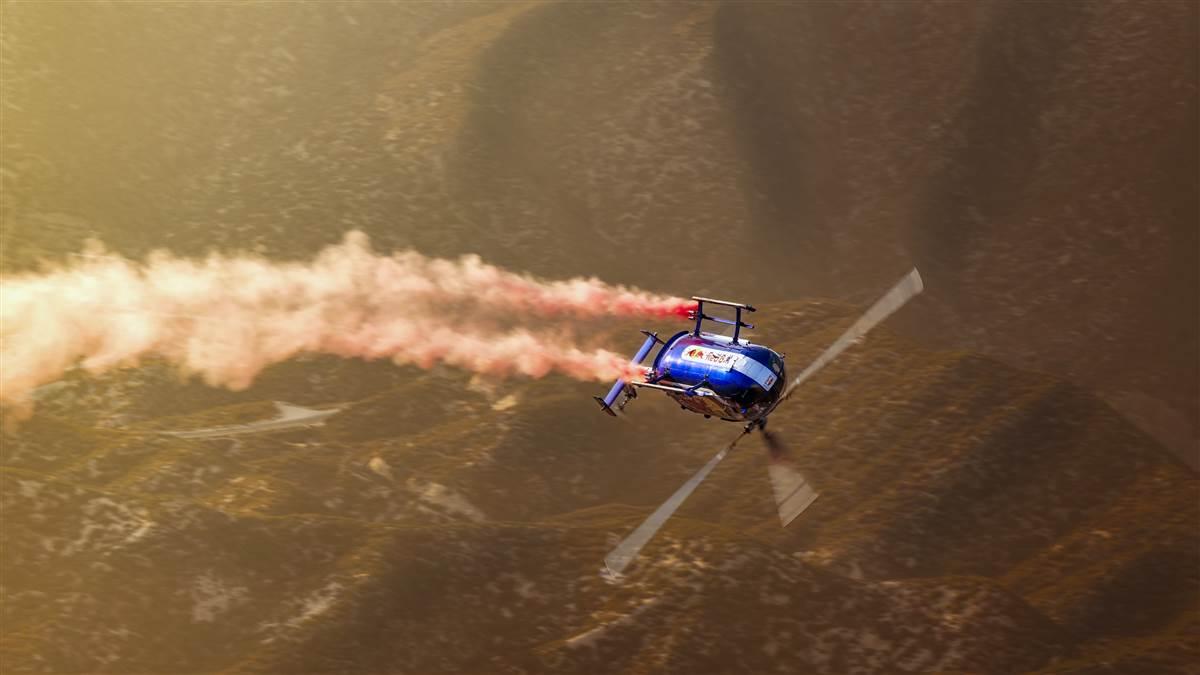
Once we’re set up in the practice area and he asks if I’m ready, we go for it. Helmet on, engine growling—it felt like a musician sitting in silence before the concert begins—quiet, focused, and heavy with anticipation. But when the aerobatics start, the experience is more like when the lights dim at a concert, the energy rockets through the roof, and you know you’re about to have a good time.
The aerobatics are gentle and surprisingly graceful — he later compares the speed, feeling, and G-forces to those of the Decathlon he recently bought from close friend Luke Aikens.

He does in fact go full deflection, operating outside that almost imperceptible cone of motion that most helicopter pilots use for all their flying, something he mentions later that he had to learn to do after a lifetime of actively avoiding going to the stops.
Of all the maneuvers, the Bo turn (named for the helicopter and pronounced like what’s on a present) is the most exciting and different, and Fitzgerald says it is also his favorite. “So, you start out straight and level like we do all maneuvers. You pitch up to about 60 or so above the horizon,” he says. “Then I rotate over forward about 300 degrees to the inverted position.”
This point feels the most strange, pushing over to go forward to the inverted position, the outlandish visibility of the helicopter disorienting to me as we then look up through the rotors and down at the valley below.
“And then as soon as I get to the inverted position, I do a 180-degree rotation on the yaw axis. So now I’m descending in an inverted attitude and spinning. And then when I recapture the heading, then I rotate another 180 degrees on the pitch axis and fly back out in the opposite direction. So, it’s a turning maneuver, but it’s really three maneuvers combined into one. And it’s really hard to do it perfectly. I don’t think I’ve ever done a perfect one, but the pursuit of
perfection is what makes it really fun and challenging.”
It is also really hard, as an airplane-only pilot, to have any clue what’s going on during the Bo turn, especially the first time we do it. It is far outside the realm of anything I’ve experienced in an airplane. By the second or third Bo turn I can somewhat anticipate what comes next, but each time it is thrilling, and unnatural, and I’m both really glad he knows what he’s doing, and delighted that my mother doesn’t know what I’m doing.
None of the maneuvers appear to change Fitzgerald’s heart rate, which makes him even cooler, and after a series of aerobatics a little longer than the length of his airshow routine, we head back in to Whiteman. Even the simplest flying brings joy, and heading back in, it is impossible not to smile and laugh at how fun it is, how lucky we are, and that for both of us, this actually, incredibly, counts as work. Naturally, I’ll never drink any energy drink but Red Bull again—all of Red Bull’s flying programs are considered marketing, and the marketing is working.
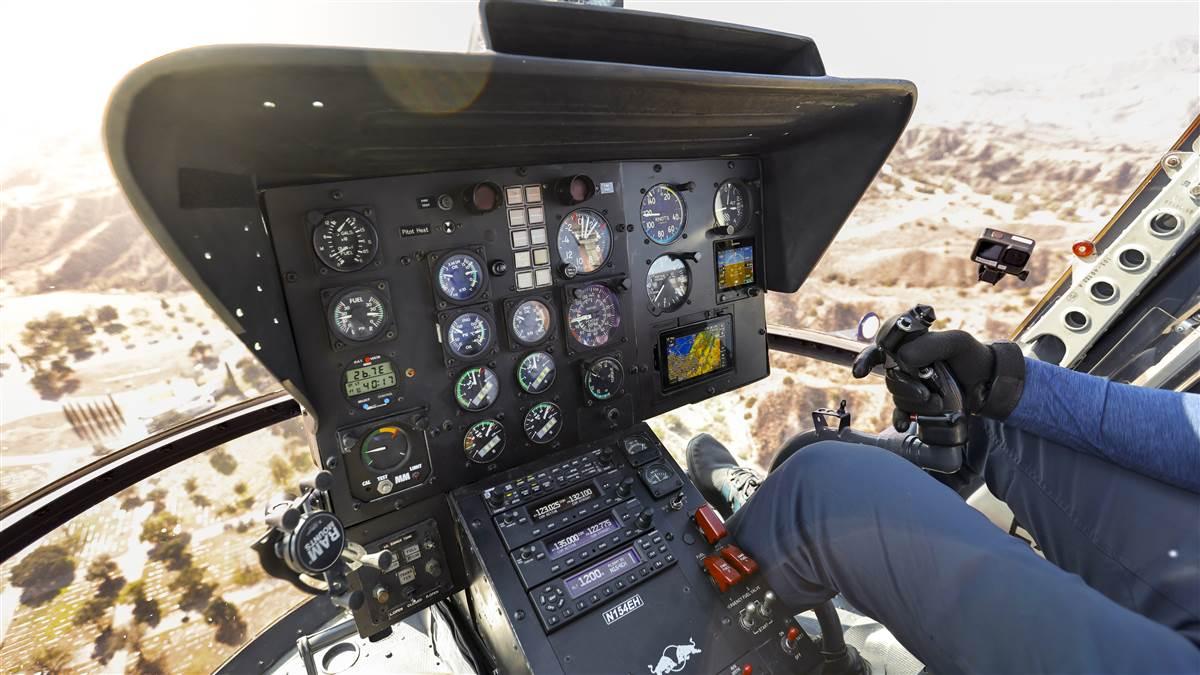
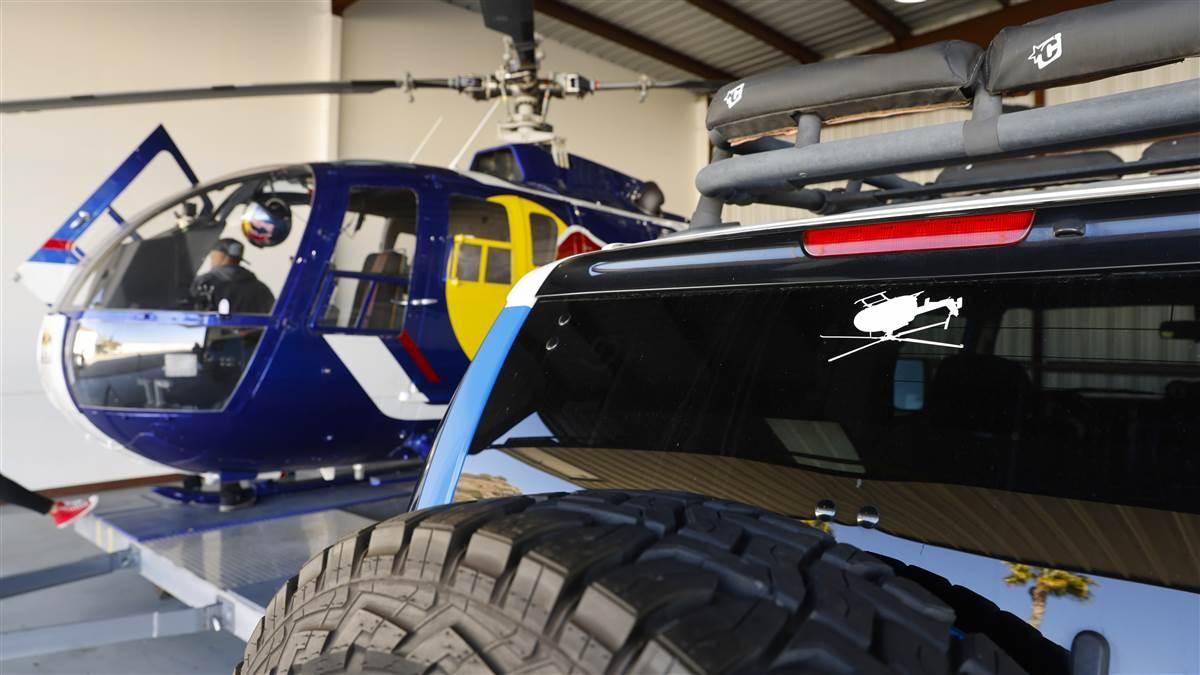
The right stuff
Wild as it is to consider, Fitzgerald never flew aerobatics of any kind before he got the job.
“Red Bull’s a unique company because it’s more like a family. It’s more a personal connection,” he says. “It’s someone, do we trust this person? Do we get along with you? Are you one of us? Can you live in our family world here and get along with everyone? And so, I think they picked me before they trained me because they knew what type of person they wanted and then fortunately I was able to do the job too.
“My first aerobatic helicopter flight was with Blacky Schwarz who was the chief pilot at the time. And he’s one of the greatest human beings I’ve ever met. I love that guy.
“And he was in town. He said, ‘Hey, I’m gonna go practice. Would you like to come with me?’ I know now that that was kind of a vetting process to see if I could handle aerobatics, but at the time I thought, Oh, sure, that’ll be fun.”
They flew Schawrz’s whole display, and then he taught Fitzgerald how to do a loop. The first loop he did was “pretty good.”
“And then he said, ‘oh, that’s great. Let’s do another one.’ So, I did the second loop and completely screwed it up, and we were falling out of the sky inverted, and I was laughing because I knew he could save it. So, I wasn’t scared. And he was like, ‘OK, that was no good. Let me tell you what you did wrong.’ We made some adjustments, and I did either one or two more and then it was time to go back.
As they were landing, Schwarz said “you did great—go practice loops tomorrow on your own, because I’m going back to Austria.”


“So, he left town and then the next day I drove to the airport, and I was literally talking to myself the whole drive going, ‘This is stupid, man. I don’t need to do aerobatics. This is unnecessarily dangerous. I got a good life. I don’t want to do this,’” Fitzgerald says with a laugh. “I baby talked my way all the way to the airport, got in the helicopter, flew out to the practice area, still talking to myself the whole way on the way to the practice area. And then I got out there and I lined up on the road where we were the day before when I was with Blacky only now I was by myself. And I was like, OK, as soon as I get to the crossroads there, I’ll do the loop. I got perfect entry speed, perfect power setting, everything, altitude, perfect heading, ready to go. And then the road went by. I didn’t do it. I chickened out,” he says. “And then I turned around and did it the other way. I ended up doing a bunch of loops that day and I’ve been doing them ever since.”
Officially a signed Red Bull athlete, Fitzgerald says the day he got his hat—what in the Red Bull culture marks you as one of the crew—was pretty special. These hats are for the athletes only, and he says he actually is instructed to burn them when they start to wear out.
“It’s a big deal when you first get the hat….It’s not uncommon for a tear or two to be shed when you get your first Red Bull hat. It’s a big deal. It’s something that we place a high value on, being one of the family. The first thing that Mr. Mateschitz ever said to me was, ‘welcome to the family.’”

A big life
Red Bull gets him the attention, he says, but his life is bigger than just flying airshows. He flies for the movies (he gets his insurance through SAG-AFTRA).

“I’m in a group, a partnership called XBrand. There’s nine of us together. And we have a company that does film and television support. We work all over the world. We provide cameras and helicopters and sometimes airplanes, but mostly helicopter work for TV shows and for movies. It’s a ton of fun.” If you’ve seen Top Gun Maverick, you’ve seen their work.
He’s as proud of the rest of his work, especially powerlines and external human cargo, as he is of flying helicopter aerobatics, and on our flights, points out a series of lines he worked on. Back on the ground, he reflects on that first encounter with the powerline pilot.
“He never did see me. He finished his lunch and spooled up and took off and went back to work. And then years later, when I was flying utility, I told that story to one of the guys on the crew, because he said he was from Washington state. And I said, oh, me too. And this is how I got into this. He started laughing, and he said, ‘I was there that day.’ And he told me the name of the pilot, because they worked on that set of transmission lines. So that was the circle closing there; I saw my hero, who I never met and never knew his name or who he was or anything about him. But I saw him working one day. And that was a big moment when I decided I wanted to go fly helicopters and to go do that exact same thing with those same guys on a different mountaintop. I got to eat sandwiches on
mountaintops in a helicopter many times after that.”
The Red Bull life won’t be forever, and he knows that, but he loves all the flying he does and has no doubts about choosing an aviator’s life: “I love my job. I love flying. Anything. It’s such a unique privilege to be able to do aerobatics in a helicopter. There’s just so few people that get that opportunity. And I don’t take one second of it for granted. I really love it. I crave it. I think about it all the time.” 
